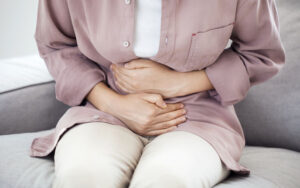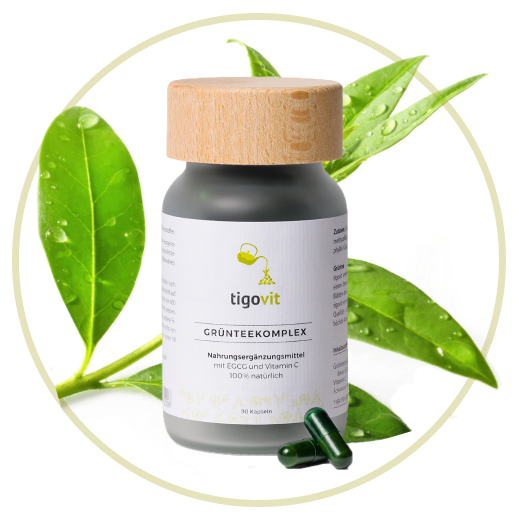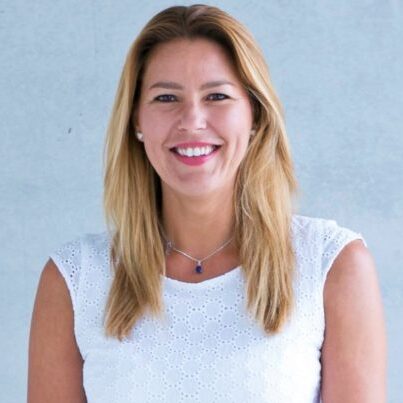Endometriosis is a mostly painful disease that affects millions of women worldwide. One in ten women suffers from the painful symptoms of endometriosis and the women usually have a long ordeal behind them before they are diagnosed. Despite its prevalence, endometriosis usually remains unrecognised for a long time - up to 10 years in Germany - and is inadequately treated. In this blog article, we will take a closer look at endometriosis in order to shed light on its causes, symptoms and treatment options.
Tigogreen is committed to endometriosis research
This topic has been particularly close to our hearts for years, as endometriosis is the second most common gynaecological disease after fibroids and still receives too little public attention. This is why we are actively committed to progress in endometriosis research: we work together with Prof. Dr Sylvia Mechsner from the Endometriosis Centre at Charité Berlin (book "Endometriosis - The Underestimated Disease") and we are currently supporting clinical endometriosis research with our ENDOGREEThttps://frauenheilkunde.meduniwien.ac.at/ueber-uns/unsere-abteilungen/klinische-abteilung-fuer-allgemeine-gynaekologie-und-gynaekologische-onkologie/patientinneninformation/ambulanter-besuch/arbeitsgruppe-fuer-endometriose/endometriosezentrum/ study at Vienna General Hospital, which we are conducting as a randomised, placebo-controlled study with Prof. Dr René Wenzl.
What is endometriosis?
Endometriosis is a disease in which tissue that resembles the lining of the uterus grows outside the uterus. In endometriosis, this endometrium-like tissue settles in various places in the body, for example on the ovaries, fallopian tubes, in the bladder, in the abdominal cavity and in the bowel. During the menstrual cycle, these endometriosis centres often react in the same way as the endometrium (lining of the uterus) within the uterus: they bleed and become inflamed. This is the reason for the usually severe pain, inflammation and reduced fertility as well as a massive psychological burden. Endometriosis is most common in women of childbearing age between 35-45, affecting around 5-15%. The disease is chronic, but this does not mean that endometriosis is not treatable.
There is a whole range of treatment options that should be individually tailored, including surgical therapy, hormonal therapy, drug-based pain therapy and complementary treatment options. The course of endometriosis is very individual, which is why the effectiveness of treatment methods varies greatly. In addition, conventional treatment methods often have severe side effects.
Causes of endometriosis
The exact causes of endometriosis are not yet fully understood. However, there are several theories that are being discussed, including
- Retrograde menstruation: According to the transplant theory, part of the uterine lining enters the abdominal cavity through retrograde menstruation. With retrograde menstruation, the menstrual blood flows not only through the vagina during the period, but also in the opposite direction through the fallopian tubes into the abdominal cavity. Retrograde menstruation is common in many women and does not normally cause any discomfort. However, according to this theory, endometriosis can develop if uterine tissue found in the menstrual blood grows in other places outside the uterus.
- Immunological theory: Normally, the immune system prevents cells from a particular organ from growing elsewhere in the body. It is assumed that patients with endometriosis have a defect in this immune defence mechanism, which allows the endometrial cells to spread.
- Genetic factors: There is evidence that endometriosis occurs more frequently in some families, which could indicate a genetic predisposition.
- Metaplasia: The metaplasia theory states that cells do not pass from the uterus into the abdominal cavity, but form directly at the affected site by transforming existing cells into endometrial tissue. A further development of this theory states that such transformations can be triggered by stimuli such as the sex hormone oestrogen, i.e. by hormonal disorders.
Symptoms of endometriosis
The symptoms of endometriosis can vary from woman to woman and range from mild to severe. Some of the most common symptoms are
- Main symptom: severe menstrual pain (dysmenorrhoea)
- Pain during sexual intercourse (dyspareunia)
- Pain during urination or defecation during menstruation
- Chronic abdominal pain, in the pelvic area or in the lower back
- Digestive problems
- Tiredness and exhaustion
- Reduced fertility
Endometriosis and psychological stress
The constant pain and the impairment of sexuality represent a considerable psychological burden. Many women take a long time to be diagnosed and some do not feel that their symptoms are taken seriously as they are often dismissed as normal menstrual cramps. The continuous physical and emotional stress caused by the symptoms of endometriosis can lead to tiredness and exhaustion.
Endometriosis and the desire to have children
Due to the reduced fertility of women with endometriosis, the disease is also a common reason for an unfulfilled desire to have children. In women with endometriosis, fertility is usually reduced by around 30-50%. The exact causes of this are not fully known. It is suspected that adhesions in the uterus, ovaries and fallopian tubes could be a possible reason for infertility. In some cases, an operation to remove the endometriosis lesions can restore fertility. If pregnancy does not occur after several months despite such an operation, artificial insemination (in vitro fertilisation) can be considered. Many patients with endometriosis have been given the chance of pregnancy through this procedure.
Diagnosis and treatment of endometriosis
The diagnosis of endometriosis usually takes time, as the symptoms can be similar to those of other diseases. In Germany, it often takes 10 years from the onset of the first symptoms to diagnosis. It is important to take a detailed medical history, in which the doctor records the patient's medical history and symptoms. A gynaecological examination and imaging procedures such as ultrasound or magnetic resonance imaging (MRI) can also be carried out. The only way to diagnose endometriosis with certainty is to perform a laparoscopy. During this procedure, optical instruments are inserted into the abdominal cavity through small incisions in the skin and the doctor can check exactly whether endometriosis centres are present. Tissue samples can also be taken and analysed using laparoscopy.
The treatment of endometriosis aims to alleviate the symptoms, slow down the progression of the disease and preserve fertility. To date, the following therapy concepts have been used in the treatment of endometriosis, depending on the progression and severity:
- Medicinal painkiller therapy: Painkillers such as non-steroidal anti-inflammatory drugs (NSAIDs, acetylsalicylic acid) are used to relieve inflammation and pain. These drugs often have side effects if taken continuously.
- Surgical interventions: In severe cases, a laparoscopy can be carried out to remove the abnormal tissue and loosen adhesions, just as for diagnosis. If there is no desire to have children or family planning is complete, removal of the uterus, fallopian tubes and ovaries can also be considered. The advantages and disadvantages should be carefully weighed up with a doctor.
- Hormonal therapy: Hormonal contraceptives such as the pill, hormonal coil or GnRH agonists are used to regulate the menstrual cycle and inhibit the growth of endometriosis lesions. Endometriosis lesions react to hormones in a similar way to uterine cells in that they build up under the influence of oestrogen during the monthly cycle and are shed during the second half of the cycle with bleeding. Hormone therapies can suppress the activity of these foci. However, it can take several months for the body to adapt to such therapy before success can be assessed.
- Alternative medical approaches: Many women find relief by switching to an anti-inflammatory diet, using phytotherapy, acupuncture, traditional Chinese medicine (TCM) methods and regular osteopathic treatments, physiotherapy, massages and certain exercise or relaxation techniques (e.g. yoga or tai chi).
Lifestyle and self-care
In addition to medical treatment, certain lifestyle changes and self-care are a must to alleviate the symptoms of endometriosis. Firstly detoxification, growth inhibition and pain relief, then herbal hormone balancing, anti-inflammation and relaxation.
- Regular exercise and physical activity can help to relieve pain and regulate the menstrual cycle.
- Warm abdominal compresses provide relaxation
- A healthy diet rich in fresh fruit and vegetables, wholemeal products and lean protein can have an anti-inflammatory effect and improve general well-being.
- Stress management techniques such as meditation, yoga or qi gong can help to reduce the stress that can exacerbate the symptoms of endometriosis.
- Nutritional supplements: the targeted intake of anti-inflammatory, anti-proliferative nutrients and plant substances can help to curb the growth of endometriosis lesions and alleviate pain. There is also a whole range of proven medicinal plants that harmonise the menstrual cycle and support fertility if you are trying to conceive.
- Self-help groups and networking: You are not alone. Connect with other women and exchange ideas. Together we are stronger.
Conclusion
Endometriosis is a complex and often painful condition that affects the lives of millions of women. Although it is not yet fully understood, there are a variety of treatment options that aim to alleviate symptoms and improve the quality of life of those affected. If you are experiencing symptoms of endometriosis, you should consult a health professional to get a proper diagnosis and treatment. With the right support and treatment, you can live a fulfilling life despite endometriosis. We at Tigogreen hope that through our involvement in endometriosis research, such as our ENDOGREET study at Vienna General Hospital, we can make a promising contribution to a broad spectrum of treatment for endometriosis.
Sources:
- Mechsner, Sylvia (2021). Endometriosis. The underestimated disease. ZS-Verlag, Munich.
- Fischer, Heide (2023). Phytotherapy: The healing powers of plants. In: Becherer, E. and Schindler, A. E. (eds.). Understanding and treating endometriosis holistically. A guide (4th, expanded and revised edition).
- https://frauen-naturheilkunde.de/gp/data/_uploaded/file/Endometriose.pdf
- https://frauen-naturheilkunde.de/gp/data/_uploaded/file/Naturarzt_Endometriose_2011-5.pdf





